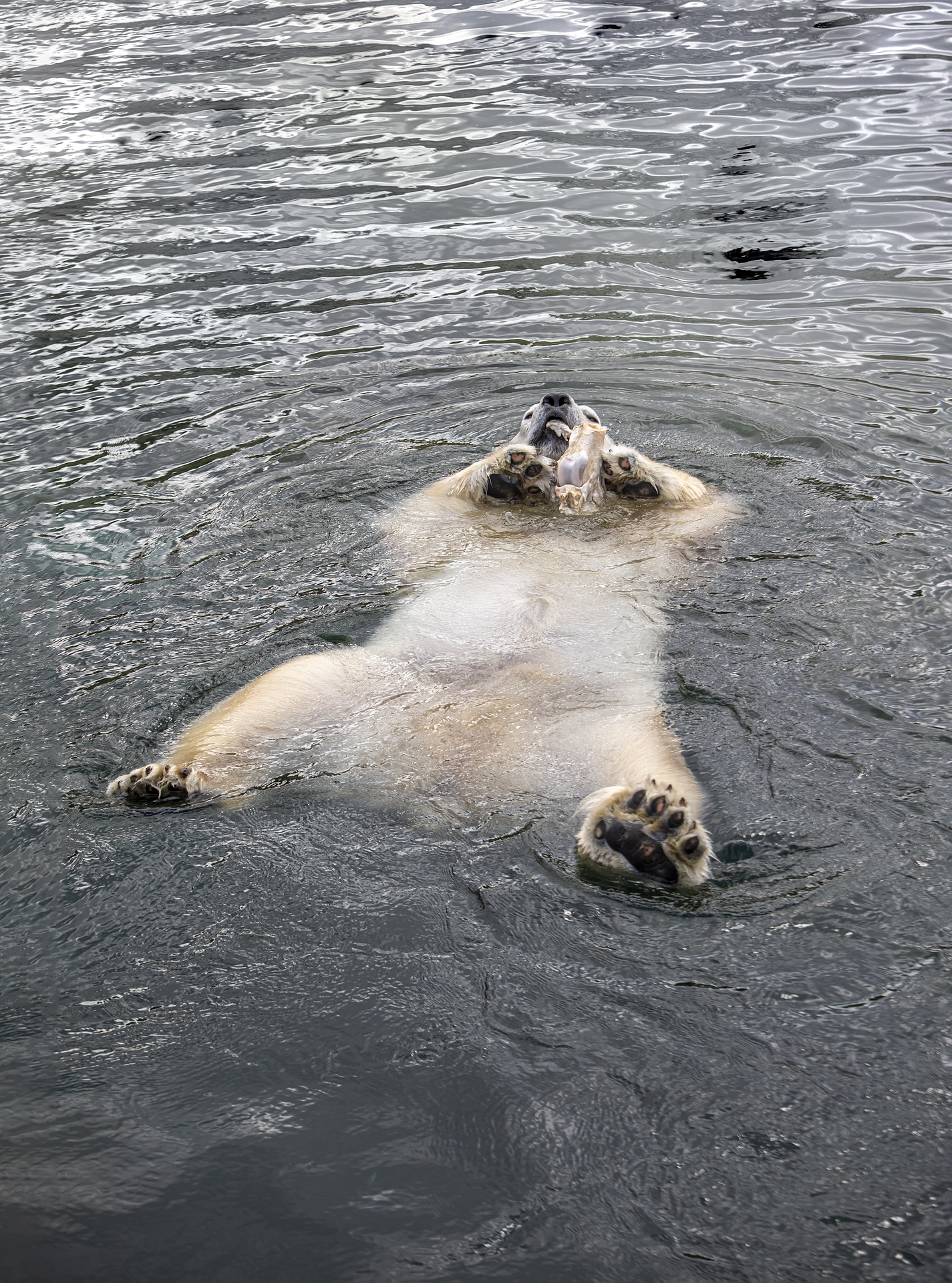Polar Bear (Ursus maritimus)
The Polar Bear is the largest living land carnivore and a powerful predator adapted to the extreme Arctic environment. This iconic species relies on sea ice for hunting, making it highly vulnerable to climate change.
Physical Characteristics
- Size:
- Males: 2.4–3 meters (8–10 feet) long, weighing 400–700 kg (880–1,540 lbs).
- Females: 1.8–2.4 meters (6–8 feet) long, weighing 150–400 kg (330–880 lbs).
- Fur & Skin:
- Appears white, but fur is actually translucent, reflecting light.
- Skin is black to absorb heat from the sun.
- Thick layer of blubber (up to 10 cm/4 inches) for insulation.
- Paws & Claws:
- Large, webbed paws (30 cm / 12 in wide) for swimming and walking on ice.
- Sharp claws and rough paw pads for grip on slippery surfaces.
Habitat & Distribution
- Found in the Arctic Circle, including Canada, Alaska (USA), Greenland, Russia, and Norway (Svalbard).
- Relies on sea ice for hunting seals, resting, and traveling.
- Climate change is reducing sea ice, threatening their survival.
Diet & Hunting
- Carnivorous apex predator, primarily eating ringed seals and bearded seals.
- Uses stealth and patience to hunt:
- “Still hunting” – waits by ice holes for seals to surface.
- Ambushing seals on ice or breaking into dens.
- Can eat up to 45 kg (100 lbs) of fat in one meal.
Behavior & Adaptations
- Excellent swimmer – can swim over 60 miles (100 km) at 6 mph (10 km/h).
- Can fast for months when food is scarce.
- Solitary, except for mothers with cubs.
- Communicates with body language, vocalizations, and scent marking.
Reproduction & Lifecycle
- Mating season: April–May.
- Females enter maternity dens in winter and give birth to 1–3 cubs (usually 2).
- Cubs stay with the mother for ~2.5 years, learning to hunt and survive.
Conservation Status & Threats
- Status: Vulnerable (IUCN Red List).
- Biggest Threats:
- Climate change – melting ice reduces hunting grounds.
- Pollution – toxins accumulate in their fat from prey.
- Human conflicts – increased interaction due to habitat loss.
How to Help?
- Reduce carbon emissions to slow climate change.
- Protect Arctic habitats and limit industrial activities.
- Support conservation programs working to protect polar bears.
Interesting Facts
- Can smell a seal from over 1 km (0.6 miles) away.
- Can overheat despite cold temperatures, so they sometimes swim to cool off.
- Have 42 teeth, with powerful canines for tearing meat.
- Despite their size, they are incredibly quiet and stealthy hunters.
Summary
The Polar Bear (Ursus maritimus) is a powerful Arctic predator that depends on sea ice for hunting. However, climate change is rapidly reducing their habitat, making conservation efforts crucial for their survival.
Visited 807 times, 22 visit(s) today
Views: 1381
Subscribe to the newsletter:
